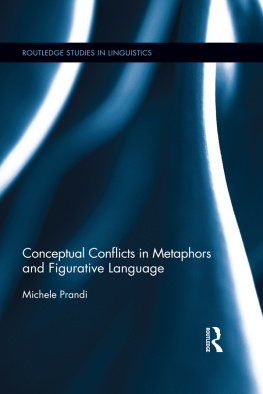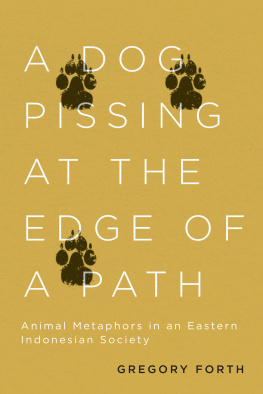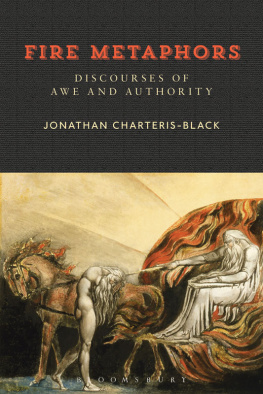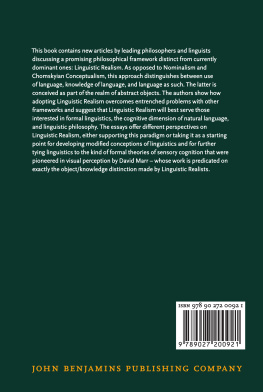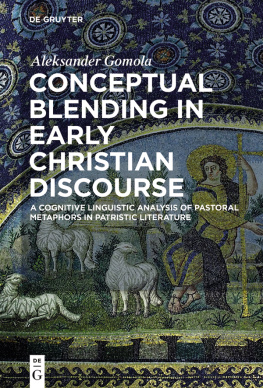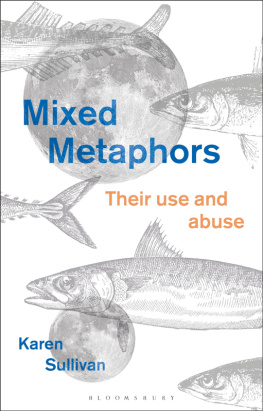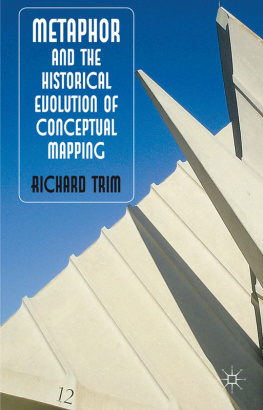First published 2017
by Routledge
711 Third Avenue, New York, NY 10017
and by Routledge
2 Park Square, Milton Park, Abingdon, Oxon OX14 4RN
Routledge is an imprint of the Taylor & Francis Group, an informa business
2017 Taylor & Francis
The right of Michele Prandi to be identified as author of this work has been asserted by him in accordance with sections 77 and 78 of the Copyright, Designs and Patents Act 1988.
All rights reserved. No part of this book may be reprinted or reproduced or utilised in any form or by any electronic, mechanical, or other means, now known or hereafter invented, including photocopying and recording, or in any information storage or retrieval system, without permission in writing from the publishers.
Trademark notice: Product or corporate names may be trademarks or registered trademarks, and are used only for identification and explanation without intent to infringe.
Library of Congress Cataloging-in-Publication Data
A catalog record for this book has been requested
ISBN: 978-1-138-63133-5 (hbk)
ISBN: 978-1-315-20876-3 (ebk)
Typeset in Sabon
by ApexCoVantage, LLC

To be a Flower, is profound
Responsibility
(Emily Dickinson)
They sleep, the mountain peaks (Alcman); conceptual model. Sixty years after Noam Chomsky put inconsistent sentences outside the scope of linguistic description and theory, conceptual conflicts provide the main topic of this monograph.
This move is not simply a vacuous provocation, but the first announcement of a consistent research program. Sentences whose meanings are torn by a conflict among their conceptual constituents are the same as those that are interpreted in texts as living figures and above all as living metaphors. However, this monograph does not just describe conflictual figures. The aim of this monograph is above all to locate these figures within the core of linguistic description as manifestations of the same linguistic means that are put in the service of instrumental uses. This implies an idea of human language that not only leaves room for figures among linguistic expressions and meanings but also, and above all, confers on figures the rank they deserve. The idea is that figures, and all the figures of conceptual content stemming from conflictual meanings, provide a privileged viewpoint on one of the fundamental questions that challenge any inquiry about human language: the question of the complex relationship between formal linguistic structures and their manifold functions, their instrumental uses, and creative engagement. In my opinion, this methodological stance leads to a better understanding of both figures and human language.
A deep interest in conflictual complex meanings, those veritable cathedrals of language, is the thread that binds together my whole life as a researcher. However, the property of conflictual meaningful expressions that first attracted my attention was not their aptitude to be interpreted as figures but rather the inner structure of their meanings and, in particular, the dissociation they display between the formal and the conceptual factors that are engaged during their ideation. The meaning of a complex expression can be defined as a network of conceptual relations supported by a syntactic scaffolding. Within a consistent sentence, the syntactic structure assembles the atomic meanings in such a way as to match an independent conceptual model. In Mary smiles , for instance, both the syntactic scaffolding and the consistent conceptual model connect the process of smiling with a human being. Within a conflictual sentence, the two orders of structure are dissociated. In The moon smiles (Blake), for instance, the syntactic scaffolding connects the process of smiling with a nonhuman, inanimate celestial body, whereas an independent, shared, and consistent conceptual model connects the same process with a human being.
Once the formal and the conceptual factors are dissociated from each other, each ones structure can be described, together with their complex interaction and its changing outcomes. Thanks to this property, conflictual expressions, which are traditionally disregarded as deviant kinds of structure, offer a privileged vantage point for observing the conditions, both formal and conceptual, that underlie the connection of complex meanings. The outcome of these reflections was the monograph Smantique du contresens (Paris: Editions de Minuit, 1987), which outlined the project of a Philosophical Grammar at the crossroads of a grammar of forms and a grammar of consistent conceptsa natural ontology.
Most figures of the plane of content, and, in particular, the most typical instances of living figures, are textual interpretations of conflictual complex meanings. Accordingly, when my attention turned to figures, I was led to look mainly at living figures and to do so through the lenses of grammar and semantics. My plan was to give a solid linguistic foundation to the classical conception of metaphor as the outcome of an act of conceptual creation documented in the mainstream of the Western tradition from Aristotle to Black. In Grammaire philosophique des tropes (Paris: Editions de Minuit, 1992), living figures on the plane of content are considered significant expressions endowed with a grammatical structure and a complex meaning that, owing to a conflict with shared conceptual models, contain both a surplus of conceptual structure and a creative potential.
My personal journey from grammar and semantics to a philosophical-grammatical description of living figures took place during the period when the cognitive turn was reaching its apotheosis. From within a cognitive approach, Metaphor means metaphorical concept (Lakoff and Johnson, 1980, 6). Figures are no longer seen as the outcome of individual acts of creation but rather as a heritage of shared and consistent concepts and conceptual structures that belong to the basic equipment of human beings; language is not the demiurge that both creates figures and shapes concepts but a means of expression and social circulation of both; the living figures that throng poetic texts are not the outcome of genuine acts of creation but rewordings and refinements of common concepts (Lakoff and Turner, 1989).
Looked at from any viewpoint, the cognitive approach appears like a blow to all classical approaches and, in particular, to the idea that figures are the outcome of acts of creation made possible by the formal structure of linguistic expressions. However, this is the way knowledge proceeds. After long periods of peaceful accumulation and refinement, a sudden revolution opens up new territories to empirical inquiry by overturning whole research programs and calling into question their firm presuppositions. However, the fact that new territories are opened up does not imply that the old ones have to be abandoned. When the boundaries of traditional views have been crossed and the revolution itself has turned into a system of acquired models, habits, and tenetsinto a paradigm (Kuhn, 1962)its lasting success depends on its capacity both to explore the new territories with new conceptual tools and to do justice to the most solid acquisitions of the traditional approaches. Cognitive approaches to figures cannot escape this cycle. After the war of conquest has annexed and colonized savage new territories, the time for peaceful and constructive reflection comes again and with it the opportunity to unify the whole realm of figures under a comprehensive approach. This implies that the acquisitions of the old traditions, instead of being simply forgotten, have to be rethought in light of the new paradigms. However, this also requires that the limits of the new paradigms be carefully identified in light of a millennial heritage and its unanswered questions. My plan in writing this monograph is to make a contribution to the comprehensive and unitary vision of figures that is now within reach.

